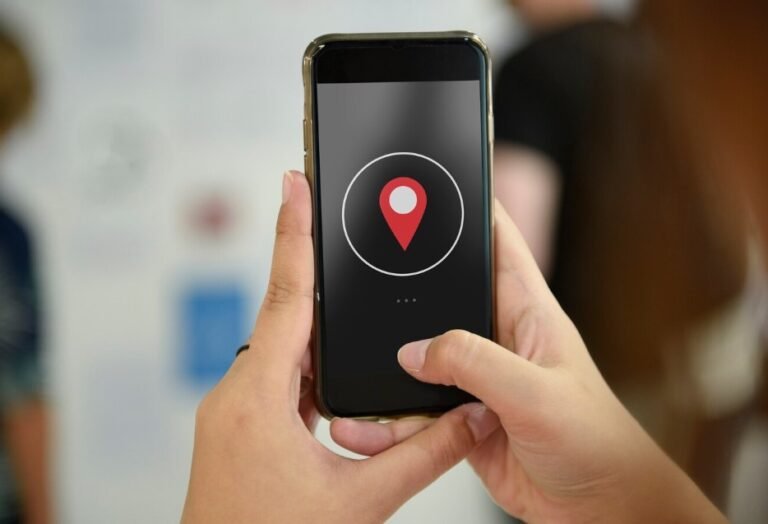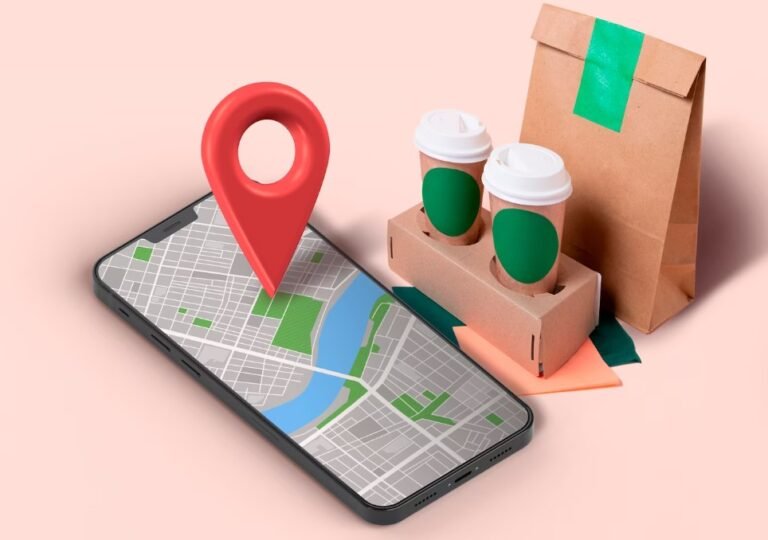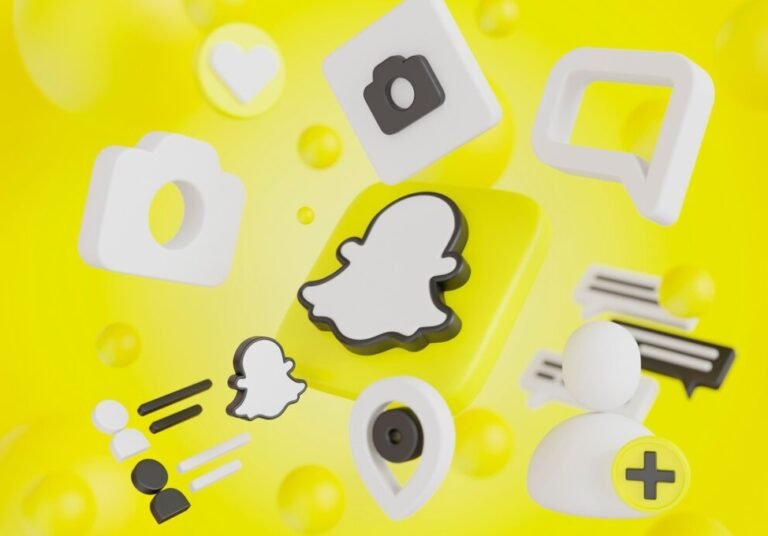In the modern digital age, phone cloning has emerged as a subject of curiosity and utility. Whether you seek to safeguard your data, transition information between devices, or explore other purposes, phone cloning presents a viable option. This article will guide you on how to clone a phone safely using a trusted app.
>> Don’t Miss:
- How to Hack Someone’s Phone Remotely Without Touching It
- How Can I Monitor My Child’s Phone Without Them Knowing 2025
- How to Track an Android Phone from an iPhone in 2025? (6 Methods)
- How to Track an iPhone from an Android Phone in 2025? (8 Solutions)
- How to Mirror A Phone to Another Phone Without Them Knowing in 2025
What Is Phone Cloning?
Phone cloning is the process of creating an identical copy of one device onto another, including all data, settings, and information. This enables access to text messages, call logs, contacts, and other private data from the cloned phone. Cloning is commonly used for data backup and transferring information between devices. However, it’s crucial to be aware of the legal and ethical implications of phone cloning and ensure it is conducted within the boundaries of applicable laws and regulations.
Tips Before You Clone a Phone
Cloning a phone without physical contact is a powerful capability, but it comes with responsibilities and considerations. Here are essential tips to keep in mind before embarking on the phone cloning journey:
- Choose the Right Method: Select the phone cloning method that aligns with your needs. For a comprehensive experience, especially for Android devices, the AirDroid Parental Control App is recommended. It offers extensive features for monitoring and ensuring your child’s safety.
- Secure a Strong Wi-Fi Connection: A stable Wi-Fi connection is crucial for successful phone cloning. Ensure both devices are connected to the same 5GHz Wi-Fi network before initiating the process.
- Back-Up Your Data: Before cloning, take precautions by backing up your Android phone data. The cloning process will overwrite existing data, so safeguard any important files or information using cloud storage or an external drive.
- Follow Instructions Carefully: Thoroughly read and follow the provided instructions for your chosen cloning method. Skipping or misunderstanding steps can lead to issues during the cloning process.
- Test the Cloned Phone: After cloning, conduct thorough testing of the cloned phone. Make calls, send messages, and use various apps to ensure everything works as expected. Address any glitches or bugs promptly.
- Keep Software Up to Date: Regularly check for updates on the cloned phone. New versions of apps and operating systems are released, and staying up to date ensures optimal functionality.
By adhering to these guidelines, you can clone a phone successfully and enjoy the benefits of remote monitoring while prioritizing safety and reliability.
How to Clone A Phone without Touching It
Now that you understand phone cloning and its purposes, let’s explore two popular methods to clone a phone without physical contact:
1. Using a Spy App
To successfully clone a phone, you need a reliable spy app with advanced features and an easy-to-use interface. Look for spy apps with a good reputation, positive reviews, and a history of providing secure and effective phone cloning capabilities.
Installing the Spy App on the Target Phone
To begin the cloning process, you must physically access the target phone. Install the chosen spy app discreetly, following the provided instructions. Make sure you have the necessary permissions to install third-party apps on the target device.
Activating the Cloning Feature
Once the spy app is installed, activate the cloning feature within the app’s settings. This feature allows you to create a duplicate of the target phone and synchronize its data with your device. The exact process may vary slightly depending on the spy app you choose, so follow the app’s instructions carefully.
How to Clone a Phone Remotely with mSpy
mSpy is a monitoring app available for both iOS and Android devices that can intercept and clone data from the target device, allowing you to access it through your user account. It operates in real-time and provides you with updated information about the smartphone activity of the target person.

mSpy is a versatile mobile spy app that provides cell phone monitoring, GPS tracking, and more. With mSpy, you can keep an eye on your children’s location and even receive notifications if they approach potentially dangerous areas. It offers features like setting controls for your teens’ phones, allowing you to block texts during specific hours, listen to call recordings in real-time, or review them later on a timeline. You can also set a time limit for unlocking the target Android phone, which can only be changed by the administrator.
For a comprehensive understanding of its capabilities, delve into our comprehensive mSpy review.
To clone someone’s phone remotely using mSpy, follow these steps:
- Visit mSpy.com, enter your email, and choose your preferred plan, all of which come with a 14-day money-back guarantee.

- Select the type of device you want to monitor, such as Android or iOS. Ensure you have physical access to the target phone. In this case, we’ve chosen Android.

- Download the mSpy Android app on the target phone, follow the on-screen instructions, and complete the installation.

- Allow the app 2-3 hours to synchronize. Visit the mSpy dashboard online to access all the information about the target phone, including texts, calls, and other details.

While mSpy isn’t a traditional phone cloning software, it can be extremely useful for individuals who want to gain comprehensive insights into someone else’s digital activities. With mSpy, you can remotely monitor text messages, social media apps, GPS locations, media files, and more. Additionally, you can create geofences, receive notifications when specific words are used, and even remotely capture screenshots of the target device’s screen.
Alternative Apps for Phone Cloning
There are several mobile apps designed to help parents remotely clone a phone to ensure their children’s safety in case of emergencies. These apps allow parents to have remote control over their child’s phone, including tracking their location and even locking the device.
1) uMobix
uMobix is an excellent tool for parents to safeguard their children and educate them about safe internet usage. uMOBix offers comprehensive solutions for remote monitoring, including tracking a child’s daily activities and location to protect them from potential online threats, such as bullying.
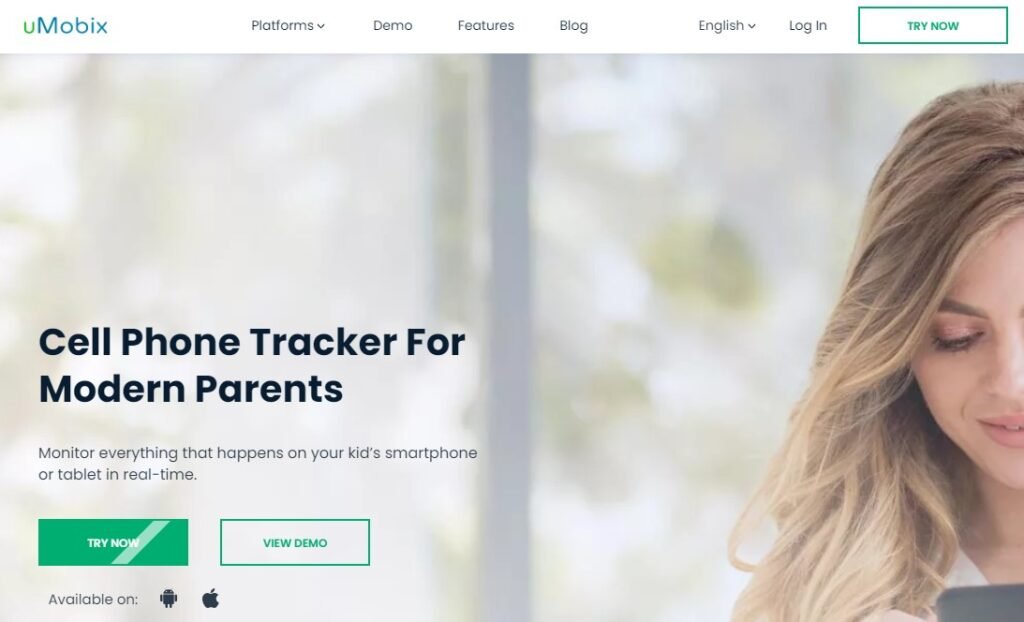
A noteworthy feature of uMobix is its ability to monitor over 30 popular applications, including social media platforms like Instagram and messaging apps like WhatsApp. This wide range of monitoring capabilities distinguishes it from other parental control apps.
Furthermore, uMobix empowers parents by granting them full control over the deletion of applications that may not be suitable for their child’s healthy growth and development. This feature enables active management of a child’s digital environment. >>Check uMobix review
2) FlexiSPY
Flexispy is a highly effective application for phone cloning, whether you’re targeting a specific phone or your child’s device. Unlike some applications in this category, Flexispy offers an impressively user-friendly interface that even non-tech-savvy users can easily understand and utilize for seamless phone cloning. >>Check FlexiSpy review

Don’t be misled into thinking that Flexispy is limited to just cloning messages; it goes much further. It allows you to monitor social media usage and, even more impressively, track the call log of your child or the targeted device.
Another excellent choice for ensuring your child’s future and online safety while using cell phones is the Kids Guard Pro application. This comprehensive solution offers a range of features that address your concerns effectively. >>Check KidsGuard Pro review
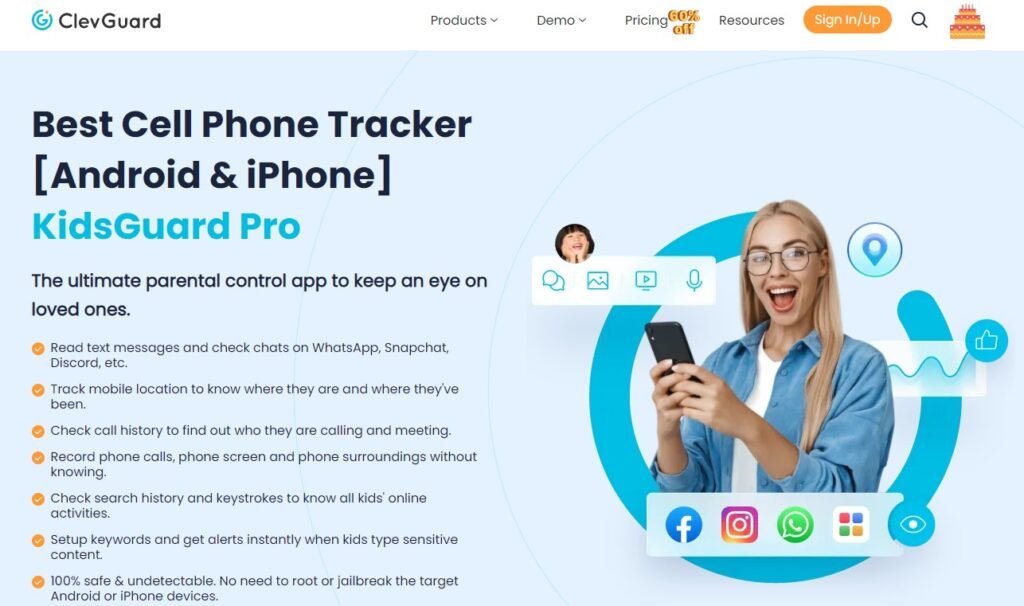
Key Features Include:
- Location History: You can track the location history of the targeted phone.
- Contact Access: Access the contacts on the phone for additional oversight.
- Screenshot Capture: Capture screenshots on the targeted phone to gather evidence, especially in cases where your child might delete content.
- Social Media Monitoring: The application covers popular platforms such as Facebook, Instagram, and even Tinder-like apps, allowing you to keep a close eye on your child’s online activities.
By utilizing Kids Guard Pro, you can ensure the safety and security of your children while alleviating your worries about their online cell phone usage.
2. Using Data Transfer Services

Dr.Fone is a widely used tool that enables phone cloning and seamless data transfer between devices. This includes contacts, photos, videos, and even app data, ensuring that you can continue using them on your new device. Dr.Fone is also handy for recovering essential data that may have been accidentally deleted or lost, or wiping data off a phone completely. It supports effortless cloning for both iPhones and Android phones and boasts a user-friendly interface.
With Dr.Fone, you can:
- Access all WhatsApp conversations.
- Find out the unlock ID and passcode.
- Migrate all data from one device to another.
Here’s a step-by-step guide on how to clone a phone number using Dr.Fone:

- Step 1: Install Dr.Fone on your PC or Mac computer.
- Step 2: Connect the phone from which you want to clone the number and the other phone to which you want to transfer the cloned data.
- Step 3: Configure one of the phones to send the data and the other to receive it.
Once the process is completed, open the new device and verify that all the data has been transferred accurately. This method allows you to clone a phone number and its associated data effectively.
It’s worth noting that Dr.Fone captures data saved on the phone, but deleted data and anything the target does after cloning won’t be visible. This is where cloning apps differ from spy apps like mSpy, which provide access to deleted files and real-time updates for ongoing monitoring.
What We Like
- Flexible backup and restore.
- Strong data erasing and backup options.
- Speedy transfers of data between phones.
- Supports cloning data to and from both Android and iOS devices.
What We Don’t Like
- Setup can be time-consuming.
- More effective on Android than iOS.
- Needs a PC or Mac to access the full suite of features.
3. Using Bluetooth

The most common method involves Bluetooth. Bluetooth is a convenient wireless technology that enables devices to communicate and share data without requiring physical contact. You can use Bluetooth for various tasks, such as transferring files between two devices or pairing accessories like fitness trackers with your phone. Here are the steps to clone a phone without physical access using Bluetooth:
- Step 1: Enable Bluetooth on both devices you want to clone.
- Step 2: Initiate the pairing process by searching for nearby devices to connect to. Ensure that the devices are nearby.
- Step 3: When prompted, input the necessary password or PIN to pair the devices. This step may be required to establish a secure connection.
- Step 4: Once the devices are successfully paired, you can begin cloning your desired data from one device to the other, including texts, call logs, and photos.
- Step 5: After completing the cloning process, remember to turn off Bluetooth on both devices to ensure security and privacy.
Please note that Bluetooth cloning may have limitations depending on the device and data you want to clone. Additionally, both devices should be compatible with Bluetooth and within range for this method to work effectively.
4. Using CLONEit on Android Phones

CLONEit is another effective method for cloning Android devices, including phones and tablets.
- Install CLONEit on both devices.
- Establish a Wi-Fi connection between them.
- Set one phone to transmit data and the other to receive.
- CLONEit will duplicate all data, including texts, call logs, contacts, and app data from your child’s phone.
Once the process is complete, open the new device and see if everything transferred properly. If you find data has been corrupted, replace it with the backup tools, and enjoy your new phone.
What We Like
- Simple, two-step “batch copy” of a device.
- Works without a PC as a “bridge.”
- No need for manual intervention throughout the entire process.
- It’s a free-to-use solution.
What We Don’t Like
- Android only.
- Both devices need CloneIt installed to work.
- Requires a robust Wi-Fi connection to expedite the cloning process.
- Needs a lot of permissions to work, which may give more security-conscious people pause.
5. Using a SIM Cloning Tool

Using a SIM cloning tool involves duplicating a phone number and transferring it to a different SIM card. This process can serve various purposes, including creating a backup of your current number or changing your existing number. However, it’s important to note that SIM cloning is a complex procedure that may have legal and ethical implications, and it’s generally recommended to explore legitimate and authorized methods for managing your phone number.
If you need to transfer your phone number or make changes to your existing number, it is advisable to contact your mobile service provider for legitimate and authorized options. They can guide you through the proper procedures and ensure that your actions comply with the law and industry regulations. Always prioritize legal and ethical methods when dealing with phone numbers and personal data.
Which One Should You Choose?
When it comes to choosing the best method for cloning a phone without physical contact, the mSpy Parental Control App stands out as the top recommendation. Here’s why:
mSpy is a versatile monitoring app compatible with both Android and iOS devices. It works with Android versions 4.0 and above, making it accessible for a wide range of devices. This app is particularly useful for parents who want to clone their child’s phone for monitoring purposes. Let’s explore some of the key features offered by mSpy:
- Call Monitoring: You can use mSpy to monitor all incoming and outgoing calls. It provides a detailed call log that includes contact numbers, call times, and call durations. Additionally, you can block specific calls from reaching your child’s phone.
- Message Cloning: mSpy allows you to access sent and received messages, including those exchanged through instant messaging apps like WhatsApp and Facebook Messenger.
- App Monitoring: You can keep an eye on all the apps installed on the target device and block any apps that you deem inappropriate for your child.
- Location Tracking: With mSpy, you can track your child’s location in real-time. It also offers geofencing functionality, enabling you to create safe zones. You’ll receive alerts if your child enters or exits these predefined areas.
- Internet Activity: Monitor internet activities such as browsing history and bookmarks. mSpy provides the ability to block inappropriate websites, ensuring a safer online experience for your child. Additionally, you can read all incoming and outgoing emails.
- Multimedia Cloning: mSpy clones all photos and videos captured by the target device, allowing you to view this media remotely as soon as it’s taken.
mSpy offers two subscription plans: a basic version priced at USD 16.66 per month and a premium version at USD 69.99 per month. The premium version provides access to all the features mentioned above, so you can choose the one that best suits your needs.
In summary, mSpy is the recommended choice due to its extensive feature set and focus on child safety and monitoring.
How to Clone An iPhone?
Cloning an iPhone can be done through various methods, including using iCloud, iTunes, or specialized iPhone cloning applications like mSpy. However, it’s important to note that the term “cloning” in the context of iPhones typically refers to transferring data from an old iPhone to a new one, not creating a duplicate of the entire device. Here are the steps for each method:
1: Use iCloud
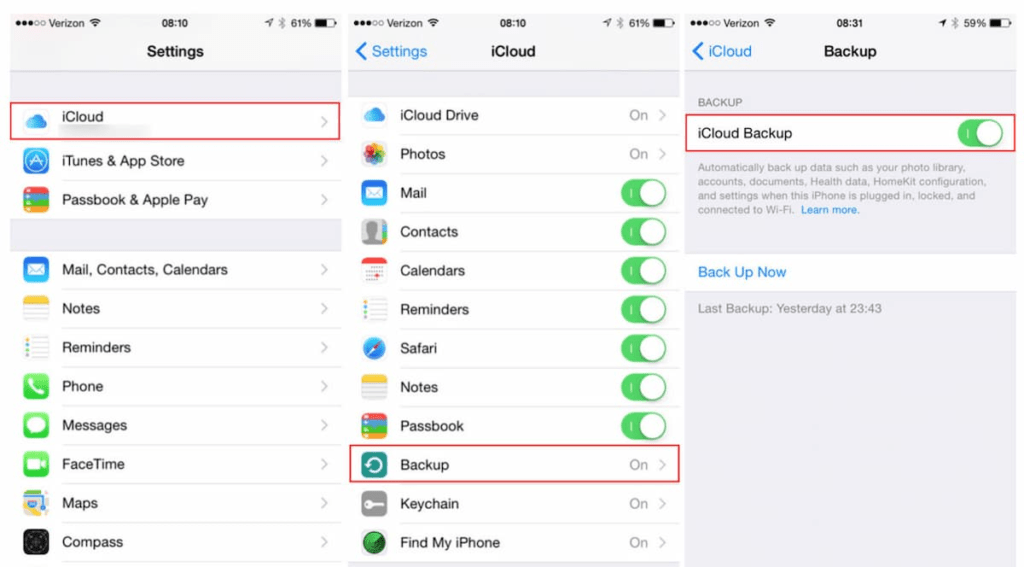
- On the source iPhone, go to Settings > [Your Name] > iCloud.
- Tap on “iCloud Backup” and select “Back Up Now” to create a backup of your data.
- Set up your new iPhone and follow the on-screen instructions until you reach the “Apps & Data” screen.
- Choose “Restore from iCloud Backup” and sign in with your Apple ID.
- Select the appropriate backup and initiate the restoration process.
2: Use iTunes

- Back up your old iPhone to your computer’s iTunes library.
- Launch iTunes and connect your old iPhone to your computer.
- Click on the device icon in iTunes, then navigate to “Summary” and click “Backup Now.”
- Connect your new iPhone to the computer.
- Click on your new iPhone’s icon in iTunes, go to “Summary,” and select “Restore Backup.”
- Choose the correct backup and click “Restore.”
3: Using an iPhone Cloning Application (mSpy)
mSpy is a third-party application that can assist in transferring data between iPhones. It’s important to note that mSpy primarily focuses on monitoring and tracking rather than creating duplicates of entire devices. If you need to transfer data from one iPhone to another discreetly, you can use mSpy following their instructions and guidelines.
Remember that the term “cloning” in the context of iPhones generally refers to data migration and not creating a replica of the entire device. Always ensure you have proper authorization and comply with legal and ethical standards when handling personal data and devices.
How to Clone Android Phones Secretly?
Cloning an Android phone secretly can be achieved through various methods, depending on your specific requirements and the devices involved. Here are three methods for cloning Android phones discreetly:
Method 1: Bluetooth
- Download a phone cloning app on both the device you want to clone and the target device.
- Enable Bluetooth on both devices and put them in discoverable mode.
- Start the cloning process, which may involve pairing the devices through Bluetooth.
Keep in mind that this method requires both devices to be close enough to maintain a Bluetooth connection throughout the process.
Method 2: Google Drive

- Unlock the source Android phone and go to “Settings” > “Backup & Reset.”
- Enable backup and sign in with your Google account.
- Let the source phone back up its data to Google Drive.
- Set up the new Android device and use the same Google account during setup.
- The new device will detect the backup and offer to restore it.
- Confirm the restore process, and your data will transfer to the new device.
This method allows you to clone Android data using Google Drive, but it may not replicate all app-specific settings. Both the source and target Android devices are required for this process.
Method 3: Use Phone-Specific Software
Some Android manufacturers, such as Samsung, Oppo, and OnePlus, provide their own custom-made cloning applications. These apps are designed to clone phones of the same manufacturer and are typically user-friendly.
Here’s a general process:
- On both devices, locate and open the manufacturer’s cloning app (e.g., Samsung Smart Switch, Oppo File Share, OnePlus Switch).
- Follow the on-screen instructions to initiate the cloning process.
- Typically, the process involves sending a cloning request from one device and accepting it on the other.
This method is convenient for users with devices from the same manufacturer.
Method 4: Other Powerful Cloning Apps
Several third-party applications, such as mSpy and uMobix, offer the ability to clone Android phones and are especially helpful for parents monitoring their children’s smartphone usage. These apps may not require the devices to be physically close to each other during the cloning process.
To use these apps:
- Download and install the chosen cloning app on both the source and target devices.
- Follow the app’s specific instructions for initiating the cloning process.
- These apps often come with monitoring features that allow you to track various aspects of the target device.
Remember that the availability and effectiveness of these methods may vary based on device compatibility and the specific app you choose. Always ensure you have proper authorization and comply with legal and ethical standards when handling personal data and devices.
Why Do We Clone a Phone?
The act of phone cloning serves various purposes, each catering to specific needs and circumstances. Here are some common reasons why individuals choose to clone a phone:
- Effortless Data Transfer: Cloning a phone offers a swift and uncomplicated method to transfer data from an old device to a new one. This eliminates the tedious process of manual data backup and migration, making the transition smoother and more efficient.
- Data Backup: By cloning a phone, individuals ensure that sensitive information, such as financial records or confidential work documents, is backed up securely. In cases of phone loss, theft, or damage, this backup ensures data integrity and accessibility.
- Parental Monitoring: Concerned parents often turn to phone cloning to monitor their children’s online activities and ensure they are exposed to age-appropriate content. It allows parents to track their children’s whereabouts and verify that they are where they should be, such as school or extracurricular activities.
- Employee Surveillance: Employers use phone cloning during investigations into employees’ activities, helping maintain a productive and ethical workplace. With this method, employers can track all phone activities, including calls and messages, to ensure company policies are followed and sensitive data is protected.
- Verifying Partner’s Loyalty: By having a complete backup of their partner’s data, individuals can contact them at any time and from anywhere. This enables tracking of a partner’s activities and allows individuals to assess their partner’s faithfulness.
- Security and Recovery: Cloning serves as a preventive measure against unforeseen circumstances, such as device malfunction or data loss. Having a cloned phone as a backup guarantees access to crucial information and minimizes disruptions caused by device issues.
- Consolidating Data: Individuals may use phone cloning to consolidate data from multiple devices into a single phone, streamlining access and management of their digital lives.
- Legal and Investigative Purposes: In some legal and investigative scenarios, authorities may employ phone cloning to gather evidence and extract information relevant to a case.
How To Check If Your Cell Phone Is Cloned?
To check if your cell phone is cloned or compromised, you can look for the following signs:
- Increased Phone Bills: If you notice a sudden increase in your phone bill, it may be because someone is making unauthorized calls from a cloned phone with your number. Contact your carrier to investigate and provide details about suspicious calls.
- Weird Sounds During Calls: If you hear unusual sounds like clicks, echoes, or distant voices during calls, it could be an indicator of phone cloning. These sounds may occur as a result of the cloning process.
- High Battery Usage: Cloning apps and spyware can drain your phone’s battery quickly, as they may continuously transfer data to the hacker’s device. If you experience a significant increase in battery usage, consider it a potential red flag.
- Suspicious Apps: Check your phone’s installed apps for any unfamiliar or suspicious applications. Cloning apps are typically hidden and may not appear in the app menu. Look for apps that you didn’t download or that seem out of place, and uninstall them.
- Unusual Texts or Calls: If you receive an unusually high number of calls or messages, especially from unknown or suspicious numbers, it could be a sign of phone cloning. Keep an eye on your contact list for strange entries.
If you notice any of these signs, it’s crucial to take action promptly. Visit your phone’s service center for a professional diagnosis and assistance in securing your device. Additionally, consider changing your passwords, enabling two-factor authentication, and regularly monitoring your phone’s activity for any unusual behavior.
How to Safeguard Your Device from Being Cloned
Safeguarding your phone from cloning and unauthorized access is crucial to protect your data and privacy. Here are some essential steps to enhance your phone’s security:
Set Up Security Measures:
- Ensure your phone is protected with a security code, PIN, or pattern lock.
- Use fingerprint or facial recognition for added security.
Disable Bluetooth When Not in Use:
- Turn off Bluetooth when you’re not actively using it to prevent unauthorized connections.
Lock Your Phone When Idle:
- Configure your phone to automatically lock when not in use, requiring a password, PIN, or biometric authentication to unlock it.
Keep Your Phone Secure:
- Store your mobile phone in a secure place, such as a purse or backpack, to prevent physical access by unauthorized individuals.
Exercise Caution with Downloads:
- Be cautious when downloading apps, pictures, and videos that request access to your phone’s data. Only download from trusted sources and review app permissions carefully.
By following these security practices, you can significantly reduce the risk of your phone being cloned or accessed without your permission, ensuring your data remains safe and protected.
FAQs
Is Phone Cloning Legal?
The legality of phone cloning differs depending on the jurisdiction. In many areas, phone cloning without proper authorization is considered illegal and a breach of privacy laws. It’s crucial to always comply with the laws and regulations in your region.
Is Cloning A Phone Free?
The actual process of cloning a phone doesn’t typically incur any costs, but you may need to purchase cloning software. While some third-party services offer cloning for a fee, it’s generally safer and more cost-effective to use reputable software and perform the cloning yourself.
Can Phone Cloning Be Detected?
Phone cloning can be challenging to detect since it produces an exact copy of the target phone. Nevertheless, there are certain security measures and monitoring tools that can aid in recognizing unauthorized cloning attempts.
How Do You Clone A Phone Number?
To clone a phone number, you can use applications or Bluetooth. Here’s a simplified guide:
Using Applications:
- Install a reputable cloning app such as mSpy on your phone.
- Follow the app’s setup process and grant permissions.
- Clone various data types like contacts, texts, photos, and videos.
- Transfer cloned data to another device if the app supports it.
Using Bluetooth:
- Enable Bluetooth on both devices.
- Pair the devices.
- Use Bluetooth to transfer specific data between them.
Is Cell Phone Cloning Software Safe?
It’s crucial to exercise caution when selecting cell phone cloning software, as the wrong choice can have serious consequences for your data and privacy. Trusted apps like KidsGuard Pro, with a large user base and positive reviews, offer reliable and secure phone cloning capabilities. Choosing a reputable app helps ensure the safety of your data and the effectiveness of your monitoring or cloning efforts.
What Types of Data Can Be Cloned?
The data that can be cloned varies depending on the method or application used for phone cloning. Typically, you can clone contacts, messages, call logs, photos, videos, apps, and app-related data. However, it’s crucial to understand that certain types of data, like specific app data or device-specific settings, may not be transferrable due to limitations inherent to the cloning method or application.
Can You Clone A Phone With The IMEI Number?
No, you cannot clone a phone using just its IMEI (International Mobile Equipment Identity) number. However, if you possess both the IMEI number and the SIM card, you could potentially deceive a mobile operator into believing you are the phone’s owner, which might allow for phone cloning.
Can You Clone A Phone Without A SIM Card?
Yes, some phone cloning software relies on SIM-based authentication, while others are designed to clone phones without the need for SIM cards. The method you choose may depend on the specific software you use and the requirements of the cloning process.
Can I Clone An iPhone or Android device?
Yes, phone cloning tools like mSpy, Dr.Fone, and CLONEit support both iPhone and Android devices, allowing you to clone them.
How Long Does It Take To Clone A Phone?
The duration needed for phone cloning hinges on multiple variables, encompassing the volume of data being cloned and the efficiency of the cloning software. Typically, this process can span from a few minutes to several hours.
>> Don’t Miss:
- How to Tell if a Number Is Cell Phone or Landline
- How to See Someone’s Activity on Facebook in 2025
- How to View Text Messages Sent and Received Online in 2025
- How To View Private Twitter Account Without Following in 2025
- How to See Who My Boyfriend Is Texting For Free on iPhone and Android
Conclusion
Cloning a phone remotely, without physical access, is a valuable method for both monitoring loved ones and securing essential data. The mSpy Parental Control App stands out as a top choice for achieving this without hassle. With its comprehensive features and user-friendly interface, it simplifies the process of cloning a phone.
By following the steps outlined in this guide, you’ve gained insights into how to clone a phone without touching it. Whether it’s for parental monitoring or data security, mSpy provides a reliable solution. Keep your loved ones safe and your data protected with this powerful tool.
>> Learn more how-to guides on phone app solutions.



